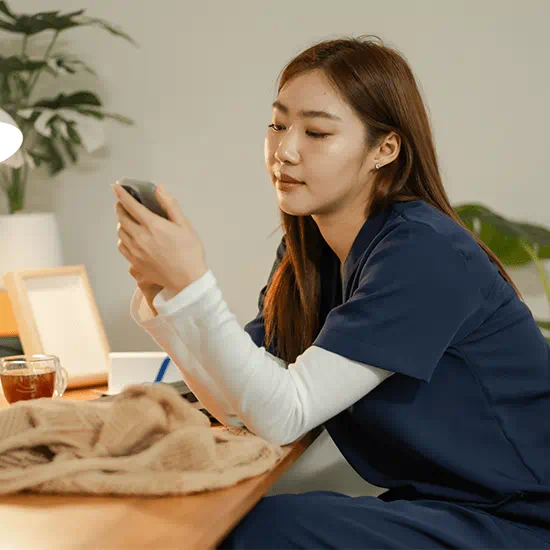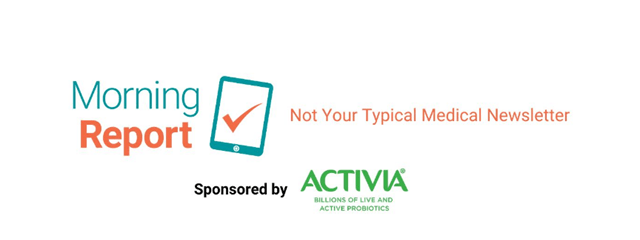
Published December 7, 2024
Morning Report — Not Your Typical Medical Newsletter
We get it, you see a lot of medical newsletters, so hear us out. Once a month, we’ll highlight important medical news sprinkled with witty commentary, fun facts, giveaways, and more… because learning should be fun! Subscribe to receive the Morning Report directly.
|
Good morning! Do you notice a flurry of patient visits around the yuletide season? It’s not your holiday haze—the Consumer Product Safety Commission reports that >18,000 people flock to US emergency departments each year thanks to holiday decorating disasters, mostly minor. It’s the Clark Griswold Effect: If decorating can go wrong, it will. Middle-aged adults bear the brunt, with injuries ranging from ladder plunges to tree/candle burns to one poor soul who overlooked a submerged ornament shard in his soup. Men edge women in injury burden, but an analysis of the perils of holiday gift wrapping flips this trend. And setup injuries outnumber takedown mishaps three to one. Why? Perhaps it’s the pre-holiday “cheer” and candy cane martinis. For those chasing that winter wonderland, heed tree safety guidelines, use caution when drinking and decorating, and avoid leaving fragile ornaments underfoot. Unless you’re Kevin McCallister—in which case, “This is [your] house; [you] have to defend it.” |
Telehealth Virtually Equal to In-Person Palliative Care
E-HEALTH EXPLORATIONS
Telehealth surged during the pandemic, reshaping care delivery. Since then, clinicians and patients have braved the roulette of tech troubles and the infamous mystery echo to embrace this convenient modality. And it’s especially suited for critically ill patients—telehealth may remove a tall barrier for the 90% of people worldwide who need palliative care but don’t get it. But is it effective in this population?
Zooming in on telehealth in palliative care
Researchers enrolled 1,250 patients with advanced non-small cell lung cancer in one of the largest randomized clinical trials comparing telehealth with in-person care. Every 4 weeks, patients in the telehealth group participated in video sessions, while those in the traditional-care group attended in-person visits. Sessions addressed symptoms, coping, care preferences, etc. At week 24, the groups demonstrated similar quality-of-life scores (99.7 for video; 97.7 for in person) and equivalent patient reports of anxiety, depression, and coping. Caregiver participation faded significantly in the telehealth group.
A fundamental flaw
Like the interviewee whose “greatest weakness” is working “too much,” the authors claim that the study’s rigorous design is its biggest limitation. The study enlisted highly dedicated sites and provided ongoing implementation support, which may not reflect the realities of routine practice.
Key takeaways
Telehealth offers convenient, cost-effective care, without sacrificing quality—a finding backed by this palliative care research. Study co-author Dr. Lee Schwamm notes the policy implications: “Medicare has to make some big decisions about whether or not to continue the waivers [put in place during the pandemic] that allow telehealth visits to be reimbursed. This study is really important for providing Congress with the evidence that they need to support the concept of extending waivers.” He’s referring to a US House subcommittee’s current review of 15 Medicare telehealth bills, dubbed the 2024 telehealth “Super Bowl.” These findings could propel those bills over that Super Bowl goal line. But who are we kidding? The Chiefs are taking that one too.
For more education on palliative care, check out this CME activity: Embracing the Journey: End of Life Care Planning and Palliative Care.
Light Therapy Not Just a Seasonal Fix for Depression
MENTAL HEALTH MUSINGS
For decades, bright light therapy (BLT) has been the go-to treatment for seasonal affective disorder. But could it shatter its winter confines and expand into nonseasonal depression, a la Beyoncé “Cowboy Carter” infiltrating country? A new study says yes—BLT may soon redefine itself as an effective treatment for both seasonal and nonseasonal depressive disorders.
A systematic review and meta-analysis of 11 randomized controlled trials (RCTs) with 858 patients explored the effectiveness of BLT for nonseasonal depressive disorders. Researchers compared BLT—delivered via a 10,000-lux light box for ≥30 minutes daily, with or without antidepressants—against a control treatment of either stand-alone antidepressants, dim red light, or placebo. BLT outshined the control group, with remission rates of 41% vs 23.5% and response rates of 60% vs 39%. BLT also accelerated remission and response in both short- and long-term follow-ups and yielded a sharper reduction in Hamilton Rating Scale for Depression scores.
“Not new”
Dr. Norman Rosenthal, the psychiatrist who coined “seasonal affective disorder” in the ’80s, appreciates these findings but isn’t surprised. A small RCT in 2015 showed BLT alone could match Prozac for nonseasonal major depressive disorder. So why hasn’t BLT caught on? Rosenthal answers with a barb for Big Pharma: “You can’t really patent light therapy.”
Key takeaways
The study authors push for clinical guidelines to recognize BLT as an effective adjunctive therapy for nonseasonal depressive disorders—citing high remission rates and swift onset (often within a month). The findings suggest BLT does not belong in a box—at least figuratively. As for literal light boxes, a 2019 study warns against internet finds. Patients may be duped by models that deliver adequate light intensity but at “unreasonably close distances, over a restricted field, or with unacceptable glare or unevenness of illumination.” Device selection matters. The evidence supports a light dose of 10,000 lux, equivalent to the intensity of sunrise light on the horizon. Patients with depression may benefit substantially from BLT, and at a low cost. Alternatively, they can catch the sunset, which is both free and priceless.
For more education on nonpharmacologic approaches to depression, check out this CME activity: Mind and Muscle: Exercise as Therapy for Depression.
- FDA OKs new drug for urinary tract infections
- FDA updates GLP-1 label with pulmonary aspiration warning
- CDC updates vaccine recommendations
A Potential One-Dose Breakthrough in Post-MI Care
EMERGING TRENDS
How can you mend a broken heart? The Bee Gees never cracked this, and science has floundered as well. You’re likely familiar with the typical post-myocardial infarction (MI) trajectory: Limited cardiac regeneration fuels scar tissue, which disrupts cardiac function and spirals into heart failure—a grim prognosis. But far-sighted scientists from UCLA are pursuing a breakthrough to transform post-MI repair.
“Stayin’ alive” post-MI
The researchers developed a monoclonal antibody that inhibits ENPP1, a protein that drives inflammation and scar tissue formation in the heart. This experimental therapy is engineered to not only prevent further damage but also actively promote healing. In preclinical studies, the therapy slashed scar tissue, preserved cardiac function, and dramatically lowered the risk of heart failure in mice after a simulated MI. Only 5% of treated mice developed major complications vs 52% in the control. And it gets better—the benefits came from a single dose of the antibody.
Key takeaways
This innovative therapy could revolutionize the post-MI landscape. Unlike existing treatments, which merely stave off further harm, this antibody actively promotes healing. If this mouse study’s momentum carries into successful clinical trials and FDA approval, we may see the emergence of a novel class of tissue repair medications, with potential applications for organs beyond the heart.
For more education on post-MI care, check out this CME podcast: Beta-Blockers Post-Myocardial Infarction: Are They Still Needed?
|
|
- New mRNA vaccine may shield against C difficile infections
- Novel stent promises to reduce long-term failure
- Diabetes & kidney trouble can bring heart disease decades earlier
- Doctors warn people to be on the lookout for an unexpected symptom of dementia when they are in the shower
- Novel intervention slows cognitive decline in at-risk adults
- Frequency of clinical signs in patients with Cushing’s syndrome and mild autonomous cortisol secretion: overlap is common
- Bioelectronic drug-free control of opportunistic pathogens through selective excitability
- Can a handful of nuts a day keep dementia away? Research suggests it might
|
Morning Report is written by:
Did You Enjoy This Issue of Morning Report? Absolutely! | For the most part | Not at all Click above, or share your feedback via email. Drop us an email at morningreport@pri-med.com to let us know how we’re doing.
Please note that the summaries in Morning Report are intended to provide clinicians with a brief overview of an article, and while we do our best to select the most salient points, we ask that you please read the full article linked in each summary for clarification before making any practice-changing decisions.
Enjoying Morning Report? Share It with Colleagues! Is Morning Report for you? It is if you’re someone who needs quick-hitting, accurate medical news—but with some flair. You don’t just need to know about the latest metabolism study—you also need to know how it parallels an Alanis Morissette hit. If you’re reading about acupuncture treatment, you need us to skip the needle puns and get straight to the point. We keep things simple, but when we do get into the scientific weeds, we always remind you to check for ticks. Subscribe to receive Morning Report directly in your inbox the first Saturday of every month.
|
